In the figure shown the masses are attached to the inextensible string. At any instant, let the positions of m1 and m2 be x1 and x2 respectively as shown in the Fig.
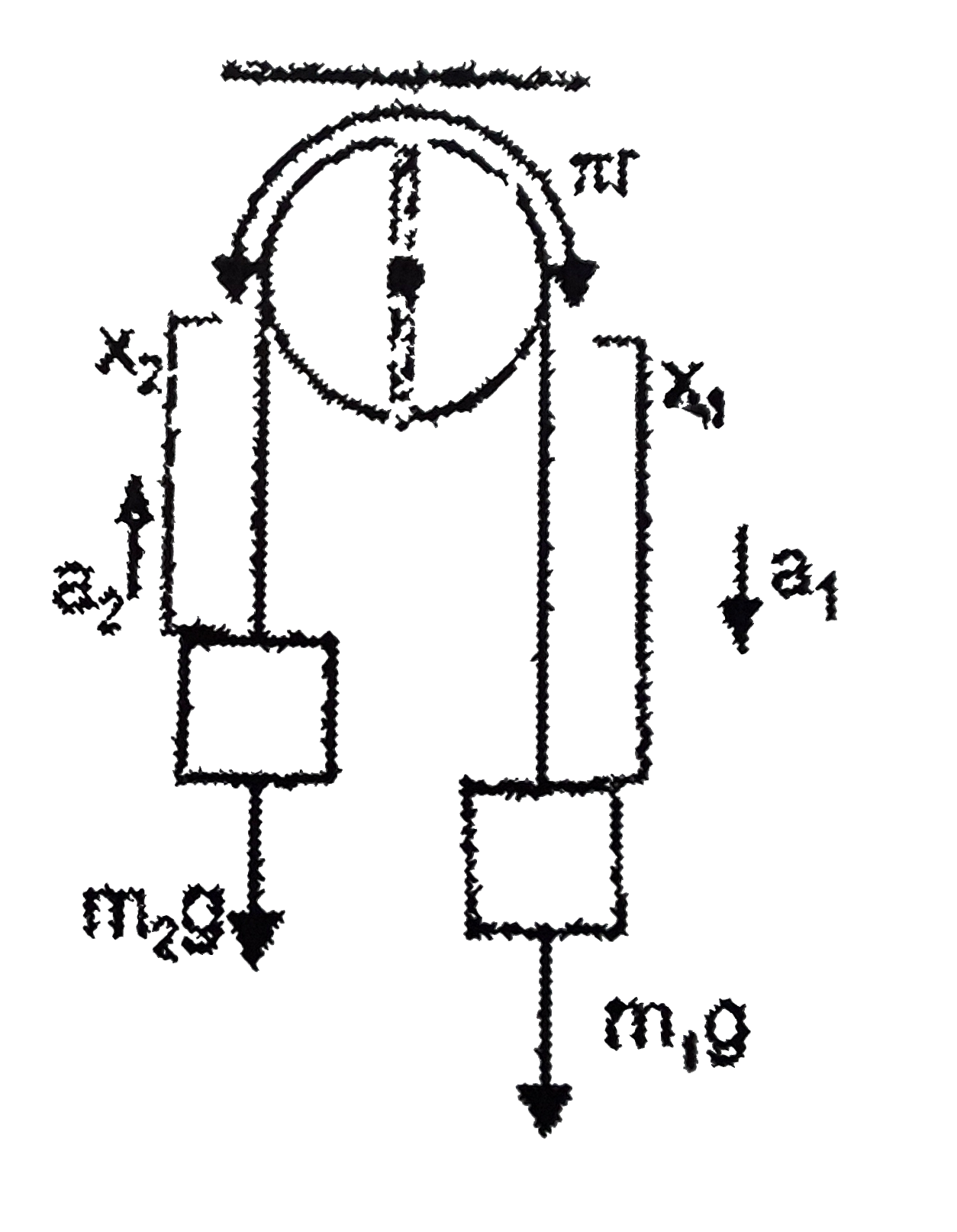
Step by step video & image solution for In the figure shown the masses are attached to the inextensible string. At any instant, let the positions of m_(1) and m_(2) be x_(1) and x_(2) respectively as shown in the Fig. by Physics experts to help you in doubts & scoring excellent marks in Class 11 exams.
Updated on:21/07/2023Topper's Solved these Questions
- FORCE ANALYSISBOOK - ANURAG MISHRACHAPTER - FORCE ANALYSISEXERCISE - Example
95 Videos
- FORCE ANALYSISBOOK - ANURAG MISHRACHAPTER - FORCE ANALYSISEXERCISE - level 1
103 Videos
- DESCRIPTION OF MOTIONBOOK - ANURAG MISHRACHAPTER - DESCRIPTION OF MOTIONEXERCISE - Level-3
34 Videos
- IMPULSE AND MOMENTUMBOOK - ANURAG MISHRACHAPTER - IMPULSE AND MOMENTUMEXERCISE - matching
3 Videos
Similar Questions
In fig. a ball of mass m1 and a block of mass m2 are joined together with an inextensible string. The ball can slide on a smooth horizontal surface. If v1 and v2 are the respective speeds of the ball and the block, then determine the constraint relation between the two.
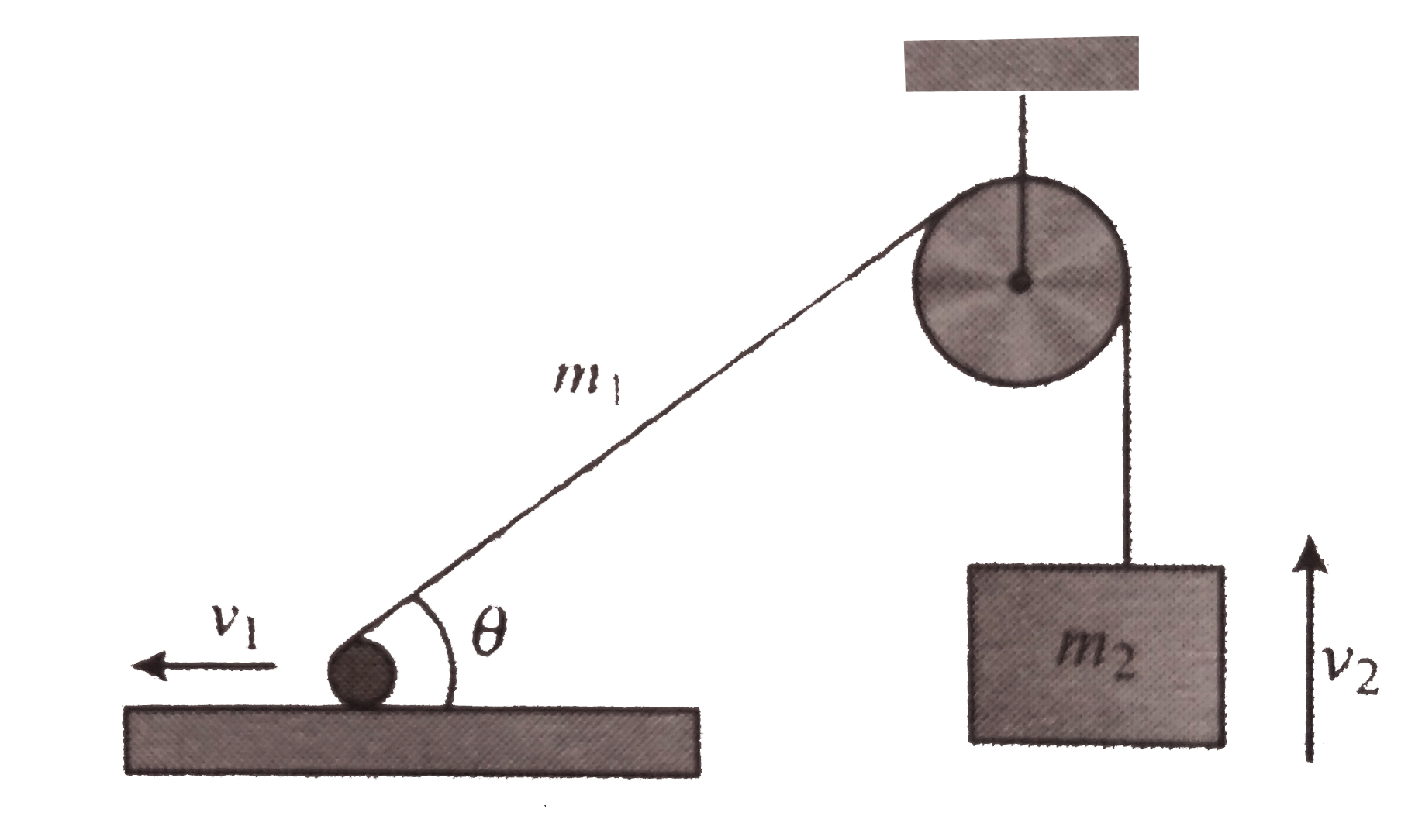
View SolutionTwo masses m and M are attached to the strings as shown in the figure. If the system is in equilibruim, then
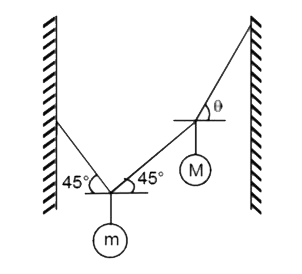
View Solution
Knowledge Check
In the situation shown in fig., all the strings are light and inextensible and pullies are light. There is no friction at any surface and all blocks are of cuboidal shape. A horizontal force of magnitude F si applied to right most free end of string in both cases shown in the figure. At the instant shown, the tension in all strings are non-zero. Let the magnitudes of acceleration of large blocks (of mass M) in fig. be a1anda2 respectively. Then,
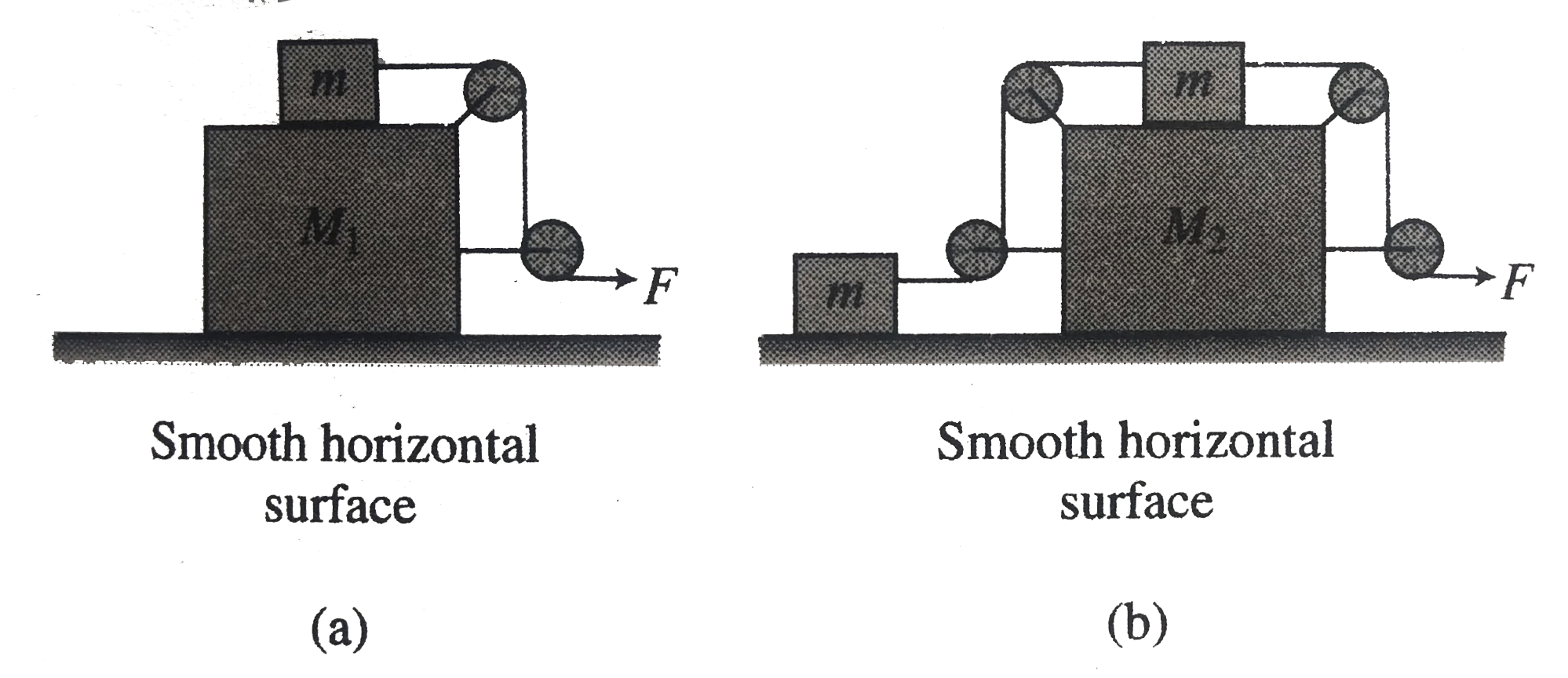 Aa1=a2≠0Ba1=a2=0Ca1>a2Da1<a2
Aa1=a2≠0Ba1=a2=0Ca1>a2Da1<a2Two masses m and M are attached to the strings as shown in the figure. If the system is in equilibrium, then
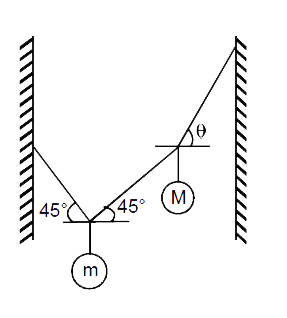 Atanθ=1+2MmBtanθ=1+2mMCcotθ=1+2MmDcotθ=1+2mM
Atanθ=1+2MmBtanθ=1+2mMCcotθ=1+2MmDcotθ=1+2mMIn the figure shown tension in string AB always lies between m1g and m2g. (m1≠m2)
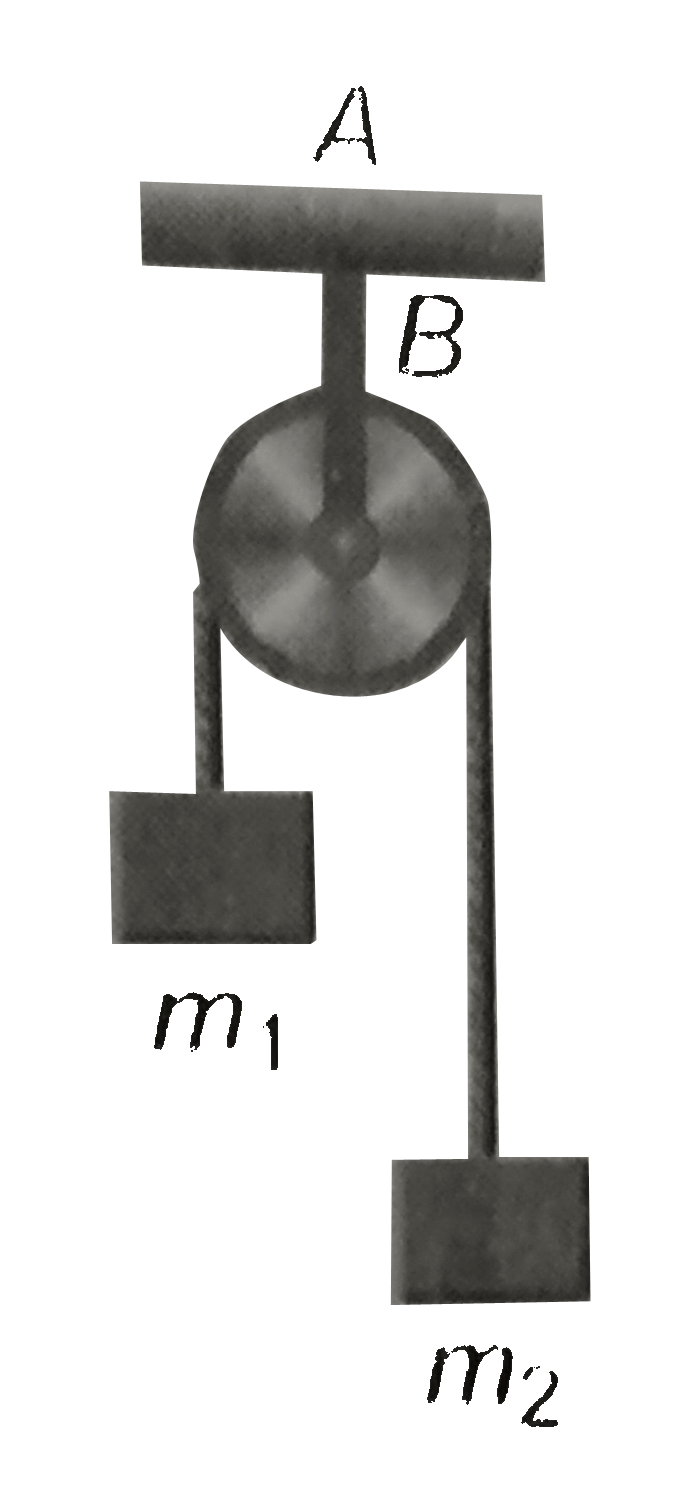
Tension in massless string is uniform throughout.AIf both Accertion and Reason are true and the reason is correct explanation of the Assertion.BIf both Assertion and Reason are true but reason is not the correct explanation of Assertion.CIf Assertion is true, but the Reason is false.DIf Assertion is false but the Reason is true.
The slope of graph as shown in figure at points 1,2 and 3 is m1,m2 and m3 respectively then
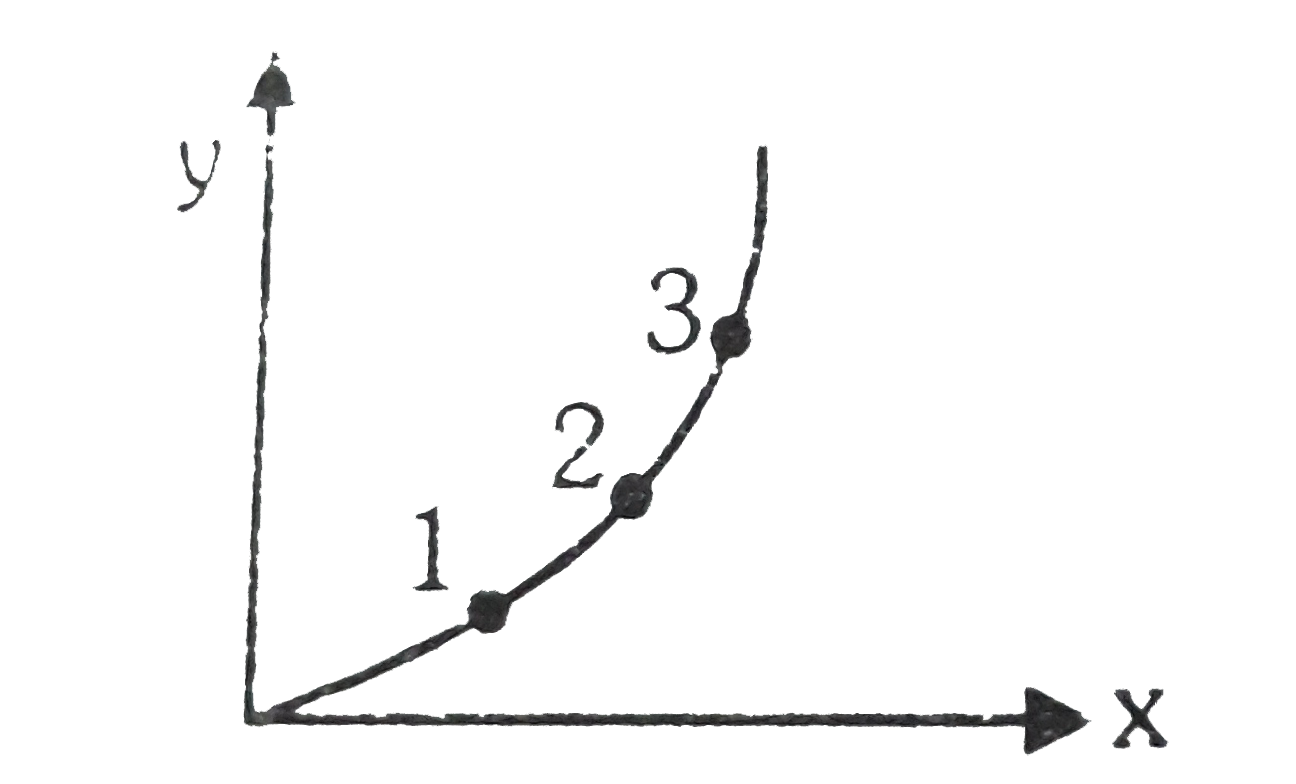
View SolutionShown in the figure is a system of three particles connected by two springs. The accelerations of A, B and C at any instant are 1m/sec2,2m/sec2 and 1/2m/sec2 respectively directed as shown in the figure. External force acting on the system is :

View SolutionAn ideal inextensible string is wrapped over the disc of mass m and radius R. The other end of the string is connected to mass m. the string is passing over an ideal pulley A as shown in the figure. At any time t, mass m and disc are moving downward with acceleration of magnitude a1 and a2 respectively. The disc is rotating clockwise with angular acceleration of magnitude α . There is no slipping betweeb string and disc. choose the incorrect option
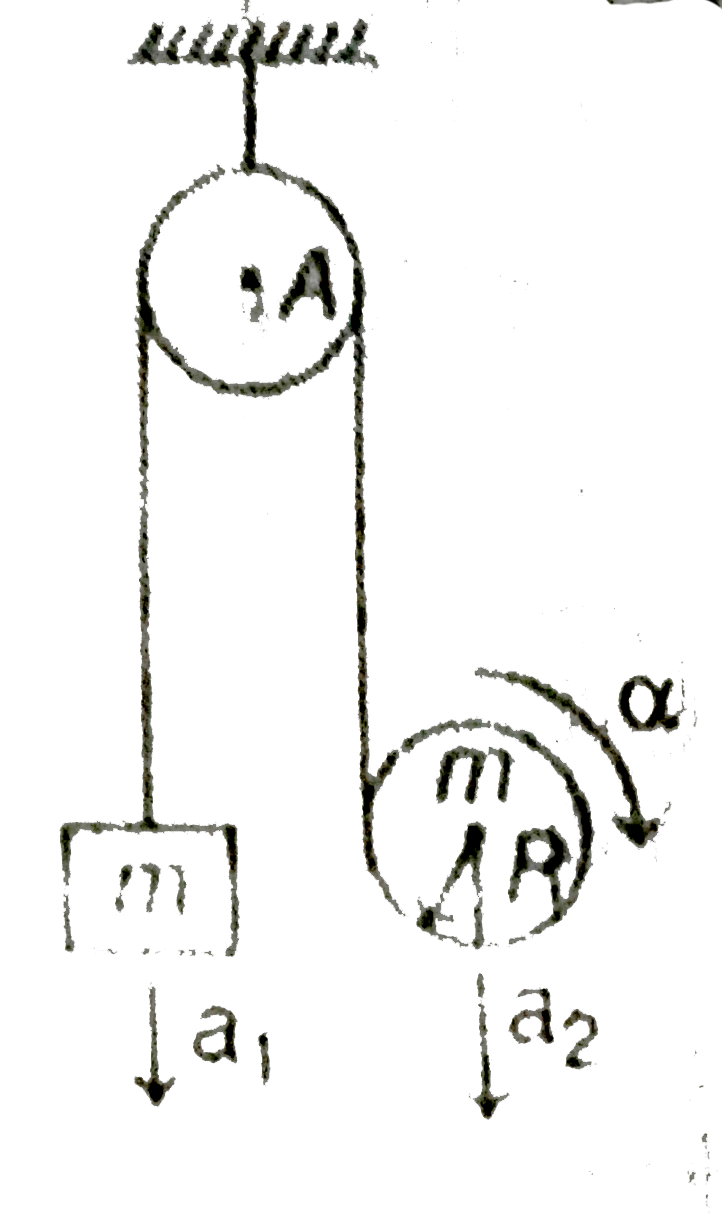
View SolutionThree blocks of masses m1,m2 and M are arranged as shown in figure. All the surfaces are fricationless and string is inextensible. Pulleys are light. A constant force F is applied on block of mass m1. Pulleys and string are light. Part of the string connecting both pulleys is vertical and part of the strings connecting pulleys with masses m1 and m2 are horizontal.

(P)Accleration of mass m1(1)Fm1(Q)Acceleration of massm2(2)Fm1+m2(R)Acceleration of mass M(3)zero(S)Tension in the string(4)m2Fm1+m2
View SolutionIn the arrangement shown in the figure -1.132 if v1 and v2 are instaneous velocities of masses m1 and m2 respectively, and angle ACB=2θ at the instant then :
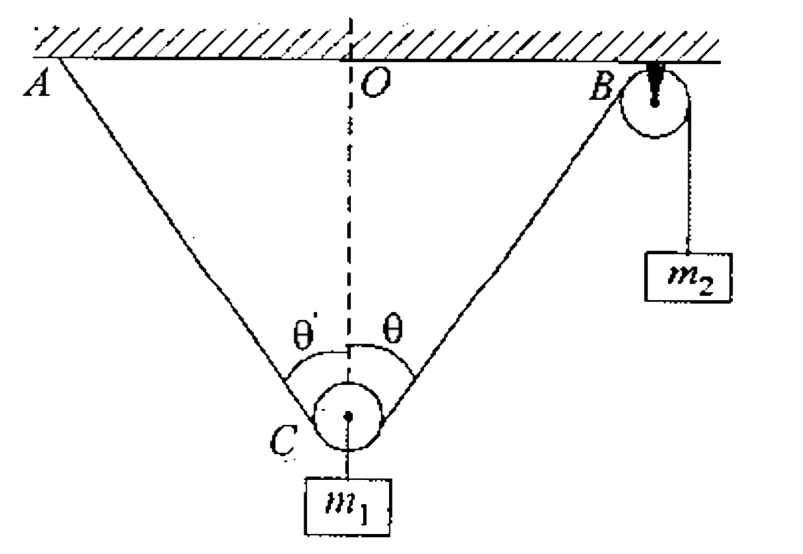
View Solution
